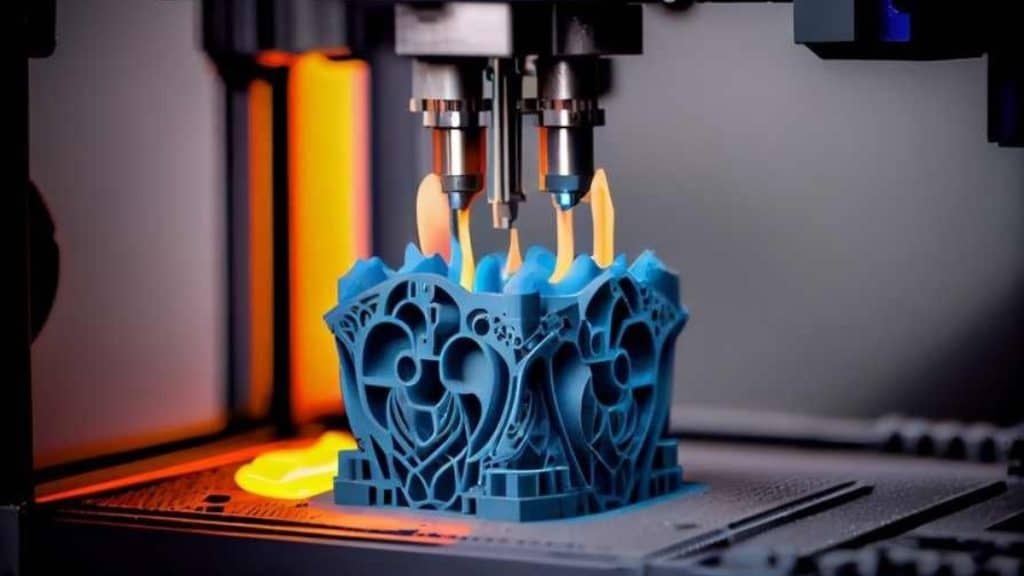Is the factory of the future already here? In recent years, advancements in production technologies have shifted the way companies create, test, and deliver products. One standout method is additive manufacturing, a process that’s transforming traditional workflows. What was once a niche tool for prototypes is now being used in full-scale production. With greater flexibility, speed, and efficiency, this innovation is revolutionising the way goods are manufactured. Here’s a look at how it’s reshaping modern industries from the ground up.
Faster Prototyping for Quicker Innovation
Industrial 3D printing enables businesses to transform ideas into physical models in a fraction of the time it takes traditional methods to require. This acceleration in development speeds up product testing, allowing engineers to identify design flaws early.
Instead of waiting weeks for a part to be manufactured off-site, teams can now create and modify it on the spot. The result? Shorter lead times, faster iterations, and the ability to bring products to market more efficiently. Companies gain a competitive edge simply by responding to challenges quickly.
Greater Design Freedom with Complex Structures
Unlike traditional machining, which subtracts material to form shapes, additive methods build objects layer by layer. This opens the door for intricate geometries and internal features that were previously impossible or cost-prohibitive.
Lightweight lattice structures, custom-fit parts, and internal cooling channels are now achievable without added complexity or cost. Industrial 3D Printing empowers engineers to think beyond conventional limits, designing parts optimised for performance rather than restricted by tooling constraints.
Cost-Effective Low-Volume Production
Producing small batches with traditional equipment often results in high per-unit costs due to the expense of molds and setups. Additive manufacturing flips that model by eliminating the need for tooling. This is especially beneficial for industries that require short runs such as aerospace, automotive, or medical fields where customisation and precision are crucial. Instead of committing to mass production, companies can test the market or fulfill niche demand without high upfront expenses.
Streamlined Supply Chains and On-Demand Manufacturing
One of the biggest disruptions has been in logistics and inventory management. By printing components closer to the point of use, manufacturers reduce the need for large storage facilities and minimise the requirement for long-distance shipping. Parts can be manufactured when and where they’re needed, reducing waste and minimising the risk of stockouts or delays. In emergencies, replacements can be produced in hours instead of days. This approach enhances flexibility and reduces the strain on global supply chains.
Improved Product Quality and Consistency
Industrial 3D printing ensures exceptional accuracy by relying on digital blueprints and automated layer-by-layer construction. This approach minimizes human error and delivers consistent results across multiple production runs. Unlike traditional manufacturing, where quality can vary due to tooling wear or manual intervention, additive processes maintain uniformity with each print.
Advanced software enables real-time monitoring and quality checks, ensuring that even complex parts meet strict industry standards. This level of precision is vital for sectors like aerospace and healthcare, where reliability is non-negotiable. The result is superior product quality, reduced defects, and less material waste during production.
Faster Time-to-Market with Digital Workflows
The integration of digital workflows with additive manufacturing significantly shortens product development cycles. Engineers can make quick design updates, test prototypes, and move to production without the delays caused by traditional mold or tooling creation. This rapid process allows businesses to respond faster to consumer trends and evolving market demands.
Digital files can be shared instantly across teams, enabling collaboration and reducing turnaround times. For industries where speed is critical, such as electronics or automotive, this means products can reach customers sooner. Faster time-to-market not only boosts competitiveness but also opens doors for rapid innovation and customization.
Customisation and Sustainability in One Process
Today’s consumers expect more personalised products, from custom footwear to tailored medical devices. Additive techniques meet these demands without added waste or delays. Since the material is only used where needed, the process is naturally more efficient. There’s less scrap, fewer leftover parts, and reduced environmental impact compared to subtractive processes. For companies focused on sustainability and customer experience, this method offers a winning combination of precision and environmental responsibility.
What was once seen as a futuristic concept is now a practical solution that is transforming manufacturing every day. With faster development cycles, flexible design capabilities, and efficient production methods, this innovative technology is rewriting the rules of how we make things. From supply chain improvements to more eco-friendly operations, the benefits extend far beyond the factory floor. As adoption grows, Industrial 3D Printing is poised to lead the next wave of manufacturing evolution turning bold ideas into reality faster than ever before.
